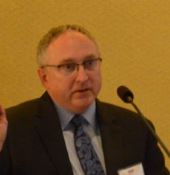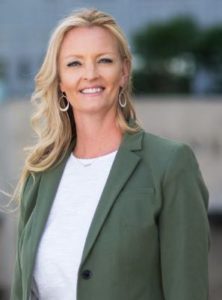Since the advent of the frac era, the idea of taking a leisurely drive in the country anywhere in the Permian Basin has dwindled to a speck in the rear view mirror. Some roads, particularly U.S. 285 between Pecos and Carlsbad, S.H. 302 through Winkler County, and I-20 pretty much anywhere along the Odessa-Midland corridor, are among the most dangerous in Texas. In the case of 285, they are among the most dangerous in the United States.
A cadre of agencies, state and nonprofit, are working to make those roads safer. The first step in that direction is making a plan. The second is getting the hundreds of millions of dollars to fund the laying of concrete and asphalt to expand the roads and make them safer. One department in particular is the focus of many of these efforts.
TXDOT’s Expanding Budget
“As an engineer, my biggest challenges are predicting the growth patterns and then finding ways to manage our resources to meet those growth patterns—whether it is maintaining and rebuilding the energy corridors, with a limited staff, or it’s trying to get the money that’s necessary lined up and in place,” said the Texas Department of Transportation’s (TXDOT) Odessa District Engineer, John R. Speed. He oversees 275 employees responsible for planning and maintaining state roads over the 12-county TXDOT Odessa District surrounding Midland/Odessa.
“I really enjoy trying to find the right data and making sure that data tells me a story that’s meaningful,” he continued. For the last two years, the majority of that data has come from the Texas A&M Transportation Institute. TTI employs more than 400 professional researchers from 50-plus countries doing road and transportation testing and evaluation.
The fact that planning is a challenge in this boom-and-bust, feast-or-famine economy should be no surprise. And the tug-of-war between local needs and Austin’s strict formulas, which don’t account for millions of trucking miles, is legendary.
But, Speed says, things are changing, more highway money is coming this way, and much of it is due to the TTI research.
“We were able to get them to identify the actual weights of some of the vehicles out here, and we found that they were much, much larger than we ever imagined.” One in four vehicles on Basin roads weighs more than it’s supposed to. Some are only a few pounds over, but the high end extends to 30-40 percent over the allowed weight.
Weight per wheel, acceleration/deceleration patterns, space needed for a tractor-trailer’s turning radius, and more are also evaluated by TTI.
The weight factor alone has clarified why standard highway equations don’t work in the Permian. “What’s not a standard part of the equation is the size of the trucks and the sheer number. There are ways that you can predict and monitor truck traffic that work very, very well under most circumstances. This is not one of them,” Speed said.
From this research, Speed feels the greatest success stories include the upgrades in U.S. 285 between Pecos and Carlsbad, and at the intersection of 285 with SH 302. Somewhat surprisingly, the study showed that most accidents were a result of trucks entering and departing from commercial driveways and intersections along the way.
This and more data have allowed the 75 in-office planners to request and receive increasing amounts of money from the state to revamp a growing number of projects.
During Speed’s first year in the Odessa district, fiscal year 2016, the construction budget was about $99 million. Succeeding years saw $120 million in 2017, $240 million in 2018, and $272 million on 2019, an increase of 2.7 times over that period. “This next year, we’re going to double again. We’ll be letting out $480 million worth of projects.”
Additionally, TXDOT has authorized another $600 million for “catch-up” projects in the 12 counties. Speed says if he and his staff find justifiable improvements and request funding from Austin, “They’ll find the money.”
He is pleased to report that his office benefits from support from the Big Three of nonprofit Permian promoters in the area: The Midland-Odessa Transportation Alliance (MOTRAN), the Permian Strategic Partnership, and the Permian Road Safety Coalition, the latter two of which are recent entries into the arena, as the competition from population centers like Houston and the I-35 corridor is intense. “They’ve all be willing to make certain that the elected officials don’t overlook us, that the highway commission’s aware of our needs—it makes my job much, much easier.”
One challenge is in handling those exponentially bigger numbers without additional personnel. “We’ve had to be very clever about contracting and very nimble about responding to needs,” he said, also admitting, “We’ve had to put a few things off that weren’t quite as important in the big picture, with respect to safety and reliability.”
I-20 is the Biggest Project
While projects like the widening of SH 302 through Winkler County to accommodate frac sand trucks, adding a passing lane to U.S. 285 between Pecos and Carlsbad (slated for completion Q4 of 2020), and others are significant, Speed says the biggest dollar amounts are earmarked for revamping 1-20 through Midland and Odessa.
Intersections at Midkiff and at County Road 1250 are slated to be reversed—I-20 going over instead of under as it does now. Those will total $60 million—fairly small amounts in highway budget numbers. Speed says projects along the 37-mile I-20 corridor through Midland/Odessa will add up to more than $800 million.
Nonprofit support from MOTRAN and PSP are key there, where, Speed says, “I’ve heard tales of folks going all the way to Washington to knock on doors.”
So where was all this money over the last 10 years, when the frac boom started? “The vast majority of it is from the return of severance taxes. That’s where a lot of the money has become available, and I think we’ve been able to successfully argue that our needs are sufficiently great to warrant getting that money.”
The state imposes a severance tax on nonrenewable resources. For oil the rate is 4.6 percent of the value and for natural gas the rate is 7.5 percent. That money is apportioned out to several funds, among them the state highway fund.
In September, 2019, State Comptroller Glen Hegar announced FY 2019 collection amounts for severance taxes at $3.89 billion for oil, up 14.6 percent from FY 2018, and $1.69 billion for natural gas, up 17.8 percent from the previous year.
All changes are designed to accommodate the much higher traffic levels due to population increases and the greater sand and water truck trips involved in hydraulic fracturing. All access roads will go to one way, which Speed says will more than double the traffic they will handle—on ramps and off ramps will be moved to prevent exiting traffic from backing up onto the main roadway—and a long list of other improvements, not all of which will be obvious.
The impression has been that the overpass reversal has been due to overly tall truck loads knocking out bridges from West Loop 250 to Stanton and further in both directions—but Speed says it’s more about updating 50-year-old designs. “When it was designed, it was great for the 1960s, but [now] this is an industrial zone—these are the kinds of loads that I’ve looked at in areas like the Houston Ship Channel,” he said.
MOTRAN: Here’s Where the Traffic is Coming From
James Beauchamp, president of the MOTRAN Alliance, says much of the workforce traffic in the area comes from across the state and from over half of the United States. Assessing workforce data combined with surveys, Beauchamp found the commuting workforce in Odessa/Midland and the immediate area grew from 10-11,000 in 2013 to about 32,000 in 2019.
That kind of traffic affects more than just highways and roads. “We can back that up based on what we’re seeing at the airport with people flying in and out every week,” he said. This has overwhelmed the parking lots there. Over the Christmas and New Year’s holidays, about 1,400 cars parked on the grass outside any controlled area.
Enplanements were up about 40,000 over 2018, he said. Parking revenue shrank a little because more people are parking on said grass because it’s free and it’s only a little further out than the airport’s remote parking lot.
On the places of origin for the commuting workforce, Beauchamp said, “Primarily it’s New Mexico, it’s Louisiana—those are the two really big ones for us out here—although we have people working here from 27 of the 49 other states.” That includes a few from Hawaii.
The number four destination to and from MAF is New Orleans, Beauchamp said.
Every Metropolitan Statistical Area (MSA) in Texas is represented except, oddly enough, Beaumont/Port Arthur. “They’ve got a little bit better fishing opportunities” than the Permian, he mused.
Dallas is the top Texas MSA sending workers here, with “a tremendous amount of people” coming from the multiple MSAs in the Metroplex as a whole. Houston and Austin supply a significant number of workers as well. Surprisingly, very few come from neighbors San Angelo and Abilene.
With New Orleans and Austin high on the commute list, it’s leading to the possible return of a direct Southwest Airlines flight to Austin, with a connection to New Orleans. That same flight would then return through Austin to Midland.
Roads and highways, however, remain the top focus. Even with the sizable boosts in highway funding reported by Speed, Beauchamp agreed that there’s not a penny to waste. “One of the things we’ve really got to do going forward is not just getting additional funding, it’s making sure that money goes where it needs to go to address actual energy sector issues and growth and population that’s serving that energy sector.”
The introduction of TTI data is a good thing, Beauchamp believes, because the official state sensors used to monitor truck traffic and weights had been in place but not working for a long time—so the state had no data from the region for a significant period of time. TTI data is, as Speed stated, bringing the region’s funding back where it needs to be.
Various oil and gas sector companies have also contributed to road construction. Several frac sand mines have paid for deceleration lanes in front of their facilities in Winkler County and elsewhere. He cited ExxonMobil, “out by their terminal facility near Wink, they agreed to do some [road] stuff way beyond their driveway.”
Beauchamp also cited the Permian Basin Petroleum Association as a willing partner in promoting Basin roadway needs in Austin.
Safety Is a People Issue
Whatever the status of the roads, one of the top keys to road safety is driver behavior, says Scott W. Scheffler, executive director of the Permian Road Safety Coalition. The purpose of the PRSC is to train drivers and their supervisors in road safety, both in how to drive and when to stop to avoid fatigue.
PRSC only became a full-time nonprofit in January of 2019, and Scheffler says the response has been great among not only large and mid-size companies, but among smaller firms as well—firms with just a handful of drivers have begun accessing the available training programs. PRSC existed as sort of an ad hoc committee for about five years, with no formal designation and only two sponsors. Twenty companies are now on board.
He attributes the growth to two main factors. “One is that folks are starting to be more aware of the risks on the roadways, and also the fact that they realize from what we’ve been talking with them about that they can make a difference in the behaviors of their employees. So folks are encouraging people to participate.”
In 2020 the PRSC will focus on helping the smaller companies, Scheffler said. “We want to make sure that these companies that don’t have the fleet of safety professionals down the hallways like the larger companies can take advantage of the resources” PRSC can provide. Many programs are provided without cost to those smaller firms.
Some of the training comes from a partnership with the National Safety Council, including one called “Train the Trainer,” said Scheffler, “where we’re actually leveraging the National Safety Council’s paid trainers, who come in and train supervisors or HR folks or even someone who’s been selected by the company to be the road safety champion. We’re training them up at no cost.”
Drowsy or fatigued driving is a significant issue, and Federal guidelines regulate commercial drivers. But that’s not the whole picture. “The issues with fatalities on the road, if you look at the numbers, the low 40 percent [of them] are caused by a commercial vehicle. We’re really still a white pickup truck problem. There aren’t Federal driving rules and logging rules for those vehicles.”
PRSC helped form a task force among sand mine firms, which works with Speed’s Odessa TXDOT district to schedule construction-related lane closures around peak traffic times and to construct, often at the sand companies’ expense, the aforementioned decoration lanes.
Reaching beyond road construction and safety training, the PRSC announced in December of 2019 a partnership with Noble Energy and Shell (Scheffler’s employer) to provide $400,000 in emergency response equipment to rural areas in the 22 counties of the Permian Basin. The rise in traffic and accidents has overwhelmed the limited resources in the smaller towns, and this is designed to help them save more lives.
PSP and the Future
The Permian Strategic Partnership, formed in late 2018, is another advocate for Permian infrastructure regarding roads and other growth challenges. President/CEO Tracee Bentley agrees that long term planning is key to staying ahead of area transportation requirements. “One of the biggest road issues for the year ahead will be the TxDOT 2021 Unified Transportation Program process, a 10-year plan that guides transportation project development across Texas,” she said in an email interview. “It is crucial that the PSP and others continue to demonstrate the importance and impact of the Permian Basin to the state, nation, and world so that funding for ‘energy roads’ will increasingly become a priority.”
Current safety issues are also on their radar, with Bentley affirming, “We are actively engaging with the TxDOT Odessa District on road design strategies to make it easier for drivers, both commercial and residential, to make safer choices when they are behind the wheel.”
In spite of changes in the area’s economic climate, she feels industry support for these issues remains strong. “In the Permian we are now observing industry ebbs and flows rather than boom and bust cycles of the past. The silver lining is that, since we know the industry is maintaining its presence and planning for expansion, the ideal time to begin new road construction projects is now,” she said.
Numbers Are Improving
Three years is a small sample, but safety efforts may be starting to bear fruit, at least in fatalities, for 2019. Said Speed, “Looks like we’ve had 171 fatalities in my district. It’s not the whole Permian. Last year [2018] it was 212,” and in 2017 the number was 173. The reduction is especially significant when accounting for the fact that traffic volumes are up 40 percent since 2017.”
“There’s a need for us to make sure that we’re developing all of those zones in a way to maintain the reliability of our biggest economic driver. I’ve always said my job is to make this the investment zone of choice for the oil companies. It’s not because I love or hate the oil companies—it’s that, if you do that, the only way that you’re going to accomplish it is to make the roadways safer. And ways to make the roadways safer is to reduce the risk factors that are driving the cost up for those oil companies. They also happen to be the same risk factors that hurt people.”
Reliability and safety, in Speed’s understanding, are inseparable.
_____________________________________________________________________________________________________
Paul Wiseman is a freelance writer in the Permian Basin.













